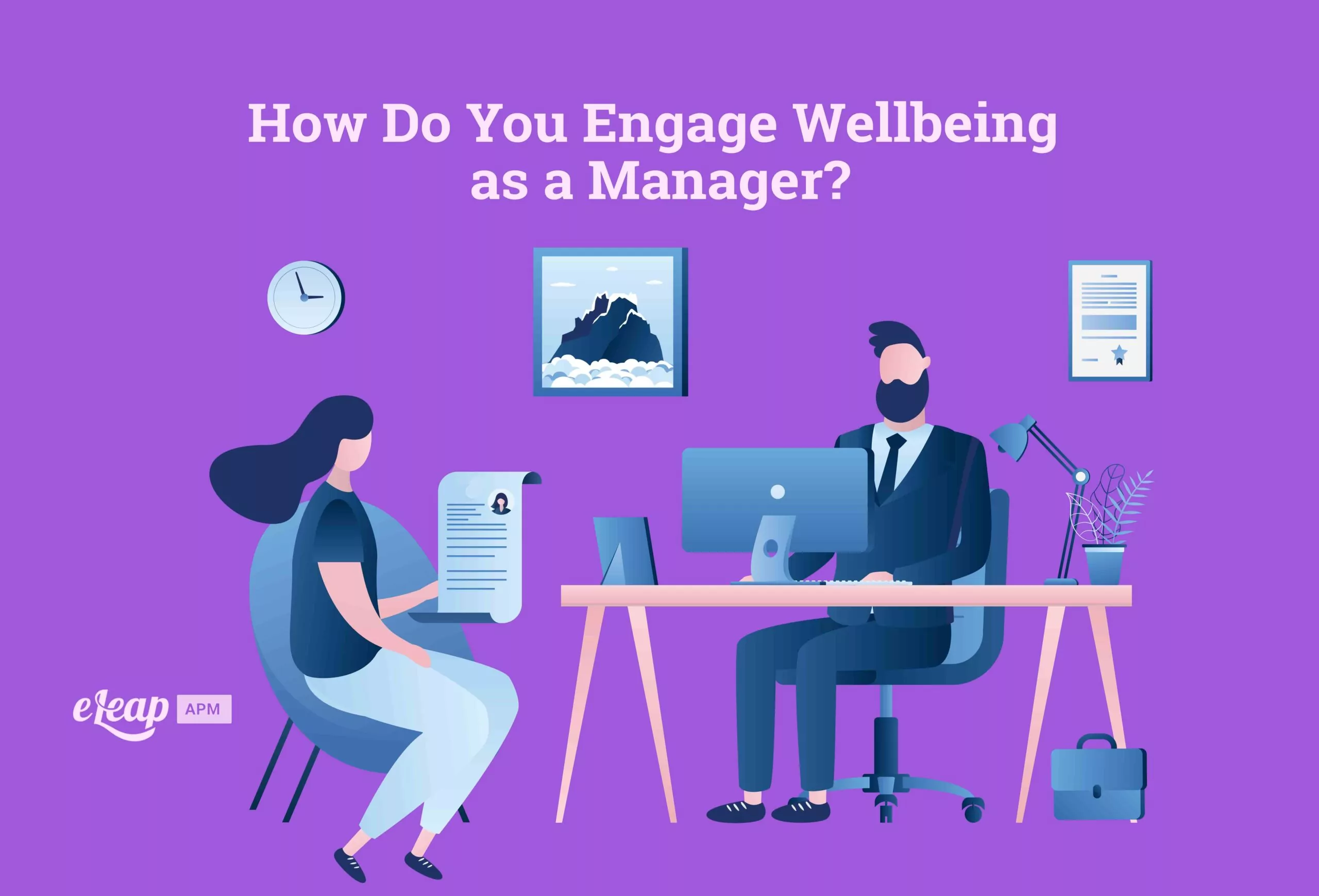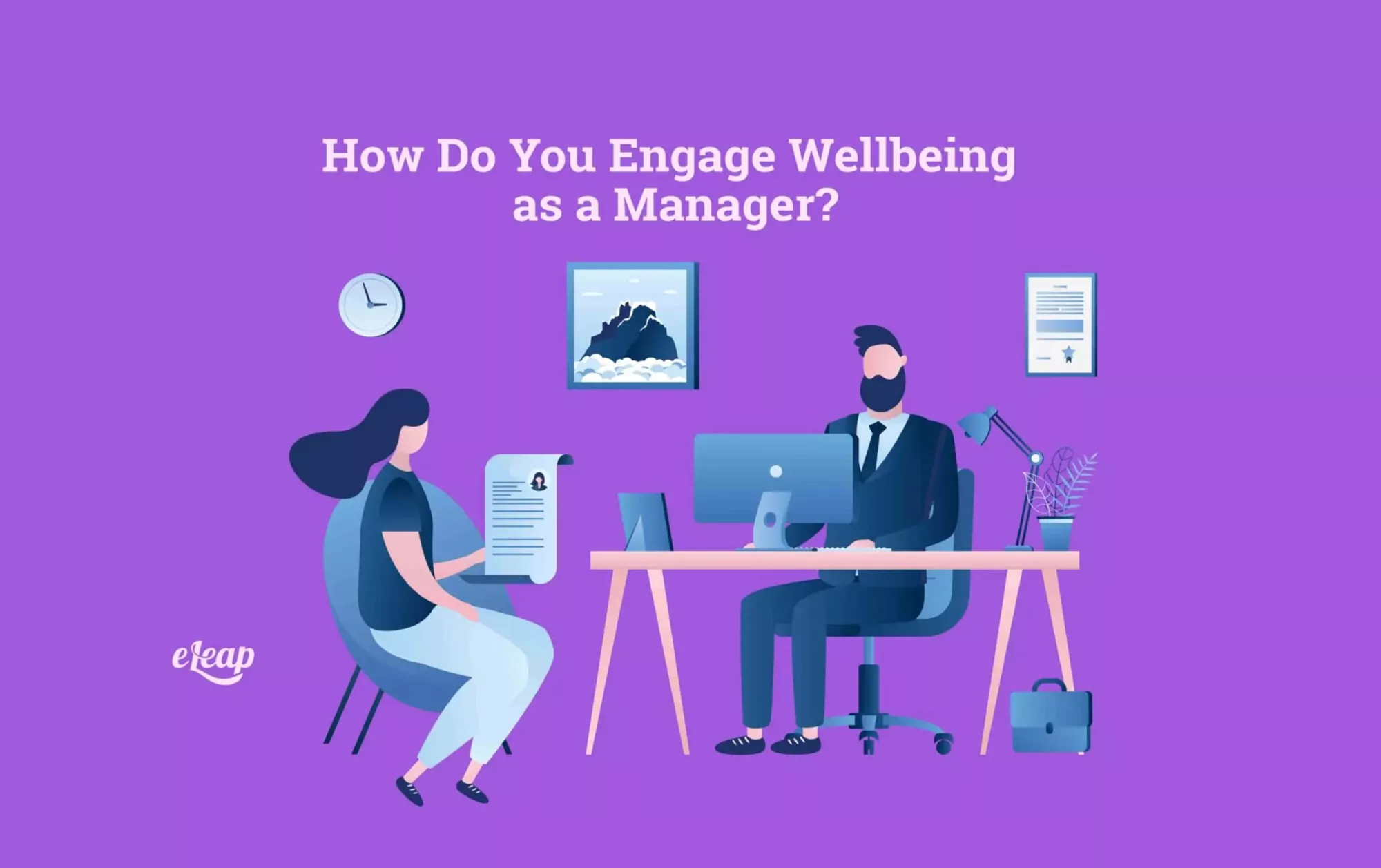How Do You Engage Wellbeing as a Manager?

In order to make the most of your organization, you need to focus on how you engage wellbeing. Employee engagement and experience are vital as well. One of the biggest investments in any business is what the business puts into its employees. After all, they are the backbone of success. In order to support your team, it’s important to look at each section separately before understanding how they interact.
What Does It Mean to Engage Wellbeing?
In order to be engaged, one must develop and maintain a genuine interest in and involvement in leading a healthy life—both at home and at work. Workplace wellness initiatives are only as successful as the percentage of participants who really use them.
The definition of engagement in a wellness program varies among experts in the field and researchers, but generally speaking, it refers to the number of participants who sign up for and stick with a program over time. Program components might include:
- Wellness occasions: walking, nutrition, and resilience programs
- Services: screening and health coaching
- Resources: online assessments, learning modules, and training programs
- Support for varied working conditions: hybrid, remote, and in-person modules

Employees who actively participate in these services tend to make better choices, including choosing healthy foods, quitting tobacco, exercising regularly, and managing stress. Employee involvement in the creation and implementation of the program’s services designed to engage wellbeing is another indication that the program will be one that stands the test of time.
Where Is Employee Experience in the Realm of Engage Wellbeing?
Employee experience is more important than ever before. With the sweeping changes that have occurred throughout all industries, employers have been forced to take a deeper look at how they engage the wellbeing of their employees and enhance their experience.
The totality of a worker’s experiences while employed by a corporation is the definition of employee experience. It includes everything from their cultural experiences, interactions with coworkers, managers, and HR, their usage of office technology, and even their impressions of their workspace or surroundings. Prior to the pandemic and the focused shift on the employee, these things were merely looked at when an issue arose or an employee left. And even then, unless something significant was found, not much thought was put into what it all meant.
In the present day, employees are now essentially viewed more similarly to customers. In essence, as an employer, you not only have to sell your product to the customers, you have to sell it to your employees as well. If you don’t have what the employees are looking for, their bargaining chip to leave and find employment elsewhere is much bigger now.
Engage Wellbeing and Experience Through Communication
Management interactions: The relationship between a manager and employee may be the one that has the biggest impact on the employee’s experience. According to a Gallup survey, managers are responsible for 70% of the variation in employee engagement. Excellent managers can act as mentors or coaches, instilling a passion for work in their staff members and motivating them to produce more.
This may be quite a shift for some managers, and they might struggle. Working with your managers to understand the need for this change is key.
Team collaborations: The daily lives of people at work also involve a significant amount of team dynamics. People are more likely to bond in workgroups with favorable dynamics that provide a trustworthy atmosphere, which in turn enables employees to collaborate more effectively and be more productive. This atmosphere of psychological safety can foster innovation and boost creativity.
Company interactions: Even though not every employee will interact with their company every day, the ones they do have can have a big impact on their level of engagement. The quality of the presentation will influence how employees feel about the organization and whether they will participate in future leadership events or communications.
The same is true for encounters with content created by the communications or human resources teams. Employees are more likely to feel heard and valued when a firm actively fosters two-way communication across all of these channels of interaction, whether it is through business leaders fielding questions at a town hall or communicators inviting comments on a blog post.
If employees feel they’re not valued within the company, productivity and motivation take a big hit, and it doesn’t take long for that impact to be seen across all levels of the company.
Employee Experience Focus Areas to Engage Wellbeing
Employee satisfaction and involvement
Employee engagement and satisfaction are directly impacted by the employee experience. Employee processes are more streamlined, and they can perform their jobs more quickly and efficiently when they have a work environment that suits them. Positive employee experiences also increase motivation to participate in one’s work, team, and business as a whole. This can be done by working harder than usual, keeping up with business developments, or looking for more efficient methods of operation.
This is why a lot of businesses and HR divisions monitor their employee engagement KPIs. Some large businesses have even gone so far as to designate the position of chief employee experience officer, who controls the employee experience in the same way that a CMO manages the consumer experience. This allows for a targeted focus on how the company plans to engage wellbeing, as well as enhance the employee experience.
Talent Acquisition
Unlike in the past, when money and promotion opportunities were the leading factors for job acceptance, candidates today seek meaningful employment as well as profitable positions. They are vetting companies just as prospective employers are vetting them. During the employment process, potential employees frequently examine benefits, environmental practices, diversity, equity, and inclusion policies.
Recruitment apps and social media platforms have put the workplace experience on the front street for all to review and evaluate. Employee advocates may be created across all of these platforms and categories to promote a great workplace environment, draw more candidates, and offer businesses more access to top talent.
Retention Efforts
New employees evaluate their new opportunity from the outset of the onboarding process, just as performance is assessed from day one for employees. Businesses that take too long to give their employees access to the tools, servers, systems, and information they need to do their jobs are losing productivity and setting a bad precedent. According to some estimates, up to 40% of newly hired workers quit their positions within the first six months. This might be in part due to poor communication, a lack of training for new employees, and a slow response time for their needs.
The Link to Customer Experience
It was mentioned above, but it is worth repeating. The customer experience and employee experience have never been more linked than they are now. According to Gallup, businesses with highly engaged employees beat their rivals in terms of earnings per share by 147%.
It’s common sense. If your employees are content, that attitude will transfer to everything they do. From engaging with the customers to how they speak about work outside of the office. Your employees are just as much essential to your word-of-mouth marketing as your customers. If you are not focused on the need to engage wellbeing within your core ranks, your business will suffer.
Profitability
It only makes sense that a company’s profitability would be related to how well they engage wellbeing and focus on their employee’s experience throughout their lifespan with the company. Evidence exists to back this statement, including a Gallup poll that shows that employees who are not engaged in their company experience can ultimately cost companies up to $450 billion dollars a year.
Essentially, a vast majority of employees are thought to be lagging in their potential investment and productivity. Which is slowing down the growth and potential profit of their company. And it all goes back to the company’s ability to engage the wellbeing of its most important asset.
What Is Employee Engagement?
The degree of connection employees have with the company, and the work they conduct is known as employee engagement. It evaluates the organization’s adherence to fundamental corporate ideals and objectives. Employee engagement also benefits the company’s efficiency, production, and profitability.
Employee engagement is strongly influenced by company culture and the work environment. Employee attitudes about their employer will also be influenced by communication, trust, and support from the workplace.
Employees are either actively engaged and enjoy their role in the company. Completely buying into the company values and goals, or they are not. There’s actually another section as well, those that are actively disengaged. These employees tend to cause a business more issues than those who are just disengaged.
Actively disengaged employees are negative and resentful about the company and may have a toxic attitude. In a day and age where managers are trying to decrease turnover and keep the staff they have. An actively disengaged employee might be one you fight a bit less for and focus on your disengaged employees instead.
Unfortunately, actively disengaged people can harm the company and their team’s morale on their way out. So focusing on those that are staying is important. Your ability to counteract the negativity and turn things around will show those that are disengaged that not all is lost. The goal is to move them closer to the actively engaged team members without making them feel overwhelmed or seeing them withdraw.
With leadership and communication, you can work through toxic situations and do all you can to engage the wellbeing of the team members that choose to commit and stick around.
Engage Wellbeing Summary
There is a lot that goes into management in our current workforce, possibly more than ever before. Your focus has to be on not only how to build the company through customer satisfaction and support for your brand. But also on how your employees perceive the company and their work-life within its walls.
It’s essential to understand how to engage the wellbeing of your employees. Plus optimize their employee experience and engagement in order to provide them with the best workplace possible. Being in tune with your employees will launch your business forward, increasing productivity and morale.